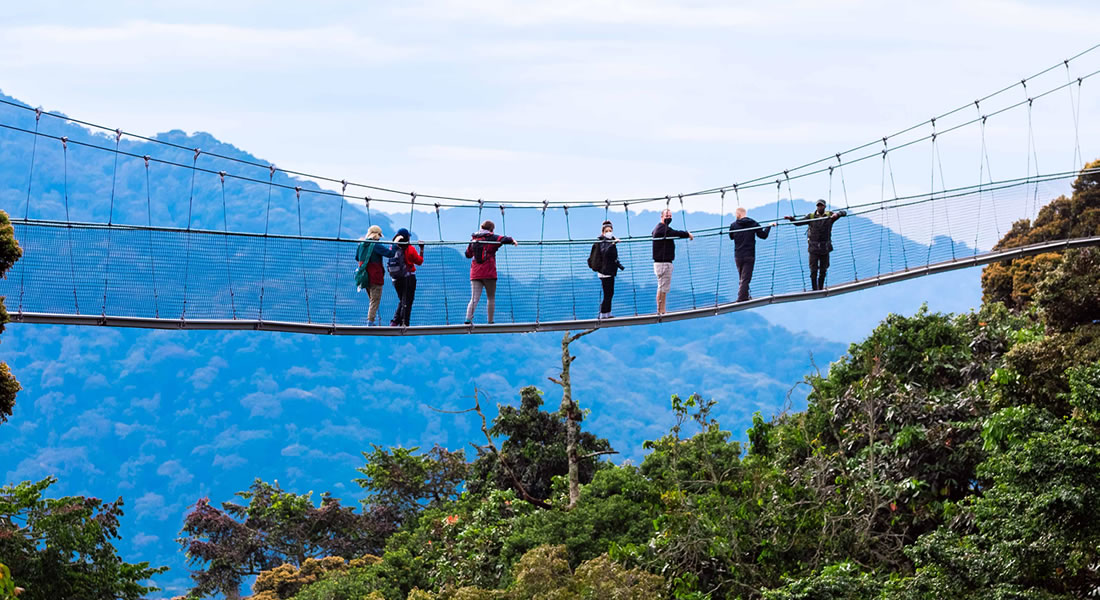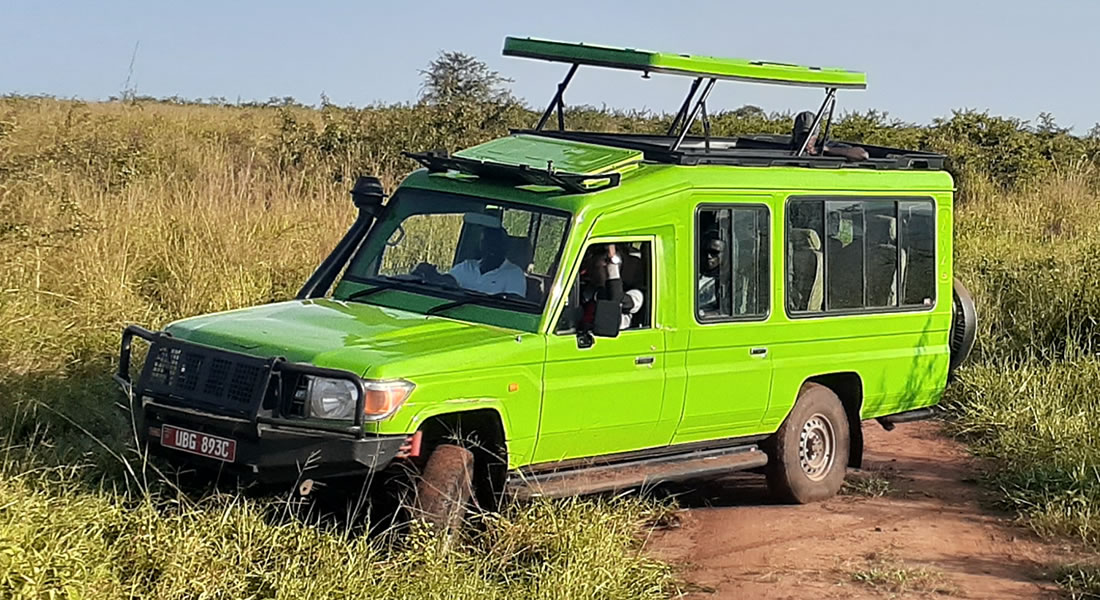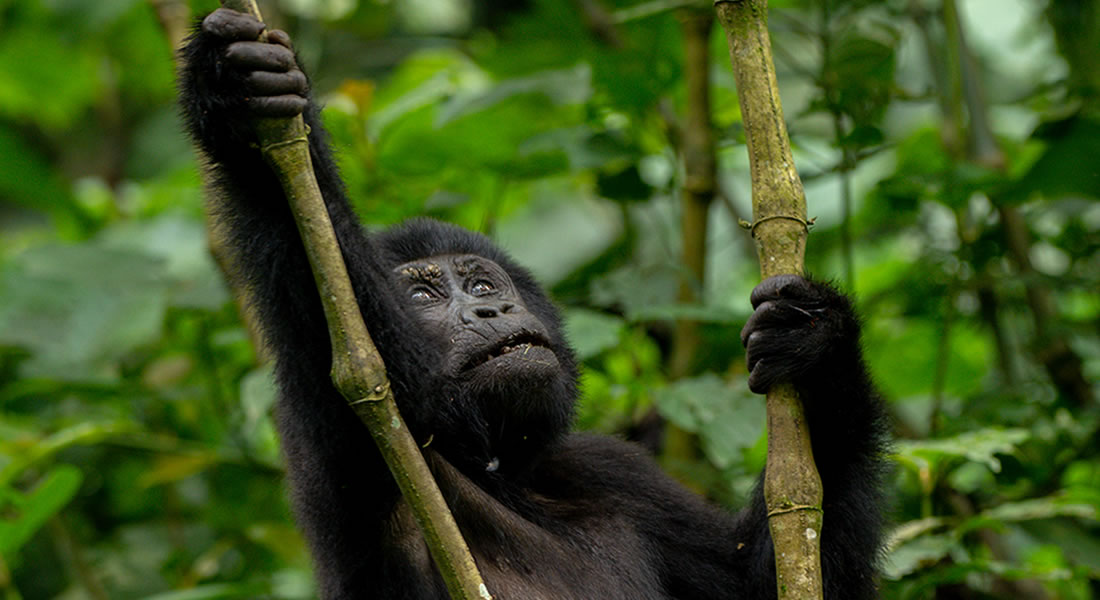Trekking with chimpanzees allows you to experience that incredible moment when the mysterious scene in…

Top things to see in Rwanda
Rwanda is known worldwide as the “Land of a Thousand Hills” due to its abundance of hills and varied scenery. Landlocked but breathtakingly beautiful and diverse, with fascinating cultures, a unique history, biodiversity, people, and exciting, action-packed National Parks and top-notch adventure sites that date back to the country’s establishment. The things to see in Rwanda are so vast and diverse that tourists from around the world come every to explore it all.
Wildlife safaris in Rwanda take you to discover Rwanda’s many tourist attractions, which include unusual combinations of an abundance of natural wonders that will leave you completely perplexed. Rwanda is one of the most fascinating and varied countries in Africa. Many tourist attractions are available in Rwanda, such as stunning scenery, fascinating wildlife, energetic locals, hiking volcanoes, dark tourism resulting from the nation’s turbulent past, peaceful, developing cities like Kigali, Africa’s cleanest city, beaches on Lake Kivu, the largest watershed in the country, and many more that will help you decide which home travel destinations are worthwhile visiting. These are a few of Rwanda’s top tourism destinations.
Akagera National Park
Akagera National Park is a well-known African wildlife safari destination. The park is home to a wide variety of wild creatures, including lions, elephants, rhinos, giraffes, zebras, leopards, buffalos, antelopes, and hippos. It’s a popular spot in Rwanda to watch baboons, crocodiles, and other primates. Visitors to Akagera National Park can take advantage of various animal viewing possibilities in addition to game drives, scenic boat cruises on Lake Ihema, sport fishing, bird watching tours, and escorted nature walks lead by skilled local rangers.
Volcanoes National Park
It takes two hours to drive from Kigali to the Volcanoes National Park, 116 kilometres across stunning mountains. The highlight of the park is the gorilla trekking experience. Spending an hour with the mountain gorillas allows visitors to observe them eating, playing, and marvelling at their enormous size. Volcanoes National Park is one of only four parks in the world that is home to critically endangered mountain gorillas. The lush bamboo forests of the park provide a breathtaking setting for anyone seeking to enjoy one of their most memorable wildlife encounters.
Nyungwe Forest National Park
Nyungwe Forest National Park is among Rwanda’s top tourist attractions. One of the park’s most well-known attractions is chimpanzee trekking. The experience differs from gorilla trekking in that sightings are more sporadic and hurried due to the chimpanzees’ frantic movements. Additionally, those who take the canopy walk in the park can get an exhilarating tree-to-eye view of Nyungwe Forest. In Nyungwe Forest, this is a fantastic place to see birds. Additionally, by visiting the Gisovu and Gisakura Tea Factories, visitors may learn about the harvesting process and even taste the delicacy.
Kigali Genocide Memorial
Before departing Kigali and going to any of Rwanda’s well-known national parks, you should unquestionably visit the Genocide Memorial Centre in the nation’s capital. Rwanda’s Museum Tourism activities house the remains of approximately 250,000 people who were brutally murdered by Interahamwe (Hutu fanatics). Three areas make up the centre: one is designated for adults, another for children who perished in the Holocaust, and a third is for learning about other genocides that have occurred worldwide.
When you visit the site, you will learn a great deal about the events that preceded and included the 1994 genocide. You can watch short documentaries on the tragic event or hear what the local tour guides have to say. The main objective of the displays, despite the fact that viewing them might be an emotional experience, is to inform people especially the younger generation about the horrors of genocides and make sure they never happen again.
Lake Kivu
Lake Kivu, which covers an area of more than 2,700 square kilometres, is the largest body of water in Rwanda. It is the sixth largest lake in Africa, extending all the way to the Democratic Republic of the Congo. Tourists adore exploring the lake because of its breathtaking shorelines, islands, and resorts. Lake Kivu is a fantastic place to go swimming, bird watching, canoeing, kayaking, windsurfing, paddle boarding, and for other water activities. The Congo Nile Trail was built along the lake’s edge, giving cyclists the chance to explore the Rwandan countryside on foot or by mountain bike. There are no hippos or crocodiles in Lake Kivu.
Kimironko Market
A simple way to gain an understanding of the way of life in a new location is to go to the main marketplace. Everyone buys cheap fresh fruits, meats, and vegetables in Kimironko Market. There is a large selection of goods available. Customers simply visit the several stalls and select what they want. The market is expanding to include premium second hand suits, handbags, shoes, and apparel. If you want high-quality, reasonably priced local fabrics or Kitenge, Kimironko is the place to go.
Hotel des Mille Collines
This five-star hotel gained notoriety thanks to the 2004 movie “Hotel Rwanda.” The movie, which is based on a true story, recounts the story of a hotel manager who hides more than 1200 people in hotel rooms during the genocide in 1994. He was able to get away with it for a while because the hotel also housed diplomats. Apart from its historical significance during the Holocaust, guests appreciate the up market hotel’s superior services. It has a restaurant, a fitness facility, a swimming pool, and 112 luxurious rooms. You can add your name to the list of people who have seen Rwanda’s most famous hotel when you check in.
Musanze Caves
These ancient caves lie in the Musanze region, outside of Volcanoes National Park. The public was allowed back into the caves in 2013 after restoration work that included building paved paths and staircases. The roughly two-kilometer-long Musanze caves were formed by lava flows that coincided with the East African Rift Valley’s creation 60 million years ago. There are about 32 more entrances, and the main entrance is about 10 km broad. A popular spot for adventure and geology lovers are the Musanze caverns. The bat-infested caverns served as a haven for the Batwa pygmies and other indigenous tribes.
Nyamirambo Women’s Center
This non-profit organisation is situated in the Nyamirambo neighbourhood of Kigali. It was founded to provide women with the training required to launch successful enterprises or land well-paying jobs. The women at the institute are trained in the art of crafting exquisite clothing using local materials. Beautiful beads and home decor items are among the various commodities that the women produce. Walking tours throughout the neighbourhood are also organised by the Nyamirambo Women’s Centre for visitors who are curious about the way of life of the people living there. When you visit this establishment, make sure you purchase something to support the women.
Coffee & Tea Plantations
Rwanda is home to a large number of tea and coffee plantations, mostly in the northern and western regions. Many tea plantations surround Nyungwe Forest National Park on wide stretches of undulating terrain near its boundaries. Rwanda is also renowned around the world for producing the best tea and coffee; the country’s main export is tea, and its coffee consistently places first in international contests. Visitors enjoy these plantation tours either prior to or following their park activities, which typically transforms their safari experiences into a genuine Rwandan experience.
Gorilla Guardians Village
Edwin Sabuhoro, a former warden of Volcanoes National Park, founded the Centre, originally known as the Ibyiwacu Cultural Village, to showcase the best features of Kinyarwanda culture and to give jobs to remorseful poachers. Prior to beginning to watch traditional dances, guests are given a tour around the venue. Additionally, visitors to the Gorilla Guardians village can learn how to hunt like the Batwa people and prepare local cuisine. You might be required to put on traditional royal garb to experience what it was like to be a leader of a community.
The King’s Palace Museum
The King’s Palace Museum Nyanza is a masterfully built thatched home in the shape of a beehive. Nyanza was once the pulsating heart of Rwanda. It was also reportedly the scene of arguments and power struggles, according to oral tradition. The most recent king to rule Rwanda was King Rudahigwa Mutara III, who was replaced by King Musinga Yuhi V. The kingdoms finally fell apart as a result of battles with Belgian invaders and the non-recognition of all tribal groups. There are still a few long-horned Inyambo cattle, who were once part of the king’s herd. They are well taken care of by their caretakers, who provide them tender care and sing to them in order to maintain a unique habit.
These exquisite cows were frequently employed in royal rituals. They were made to wear expensive jewels and listen to music while they were trained to mimic the actions of a trainer during a stately march. Remember to visit the Huye Ethnographic Museum, which is close by. It is the site of one of Africa’s best anthropological collections as well as antiques dating back more than 200 years.



